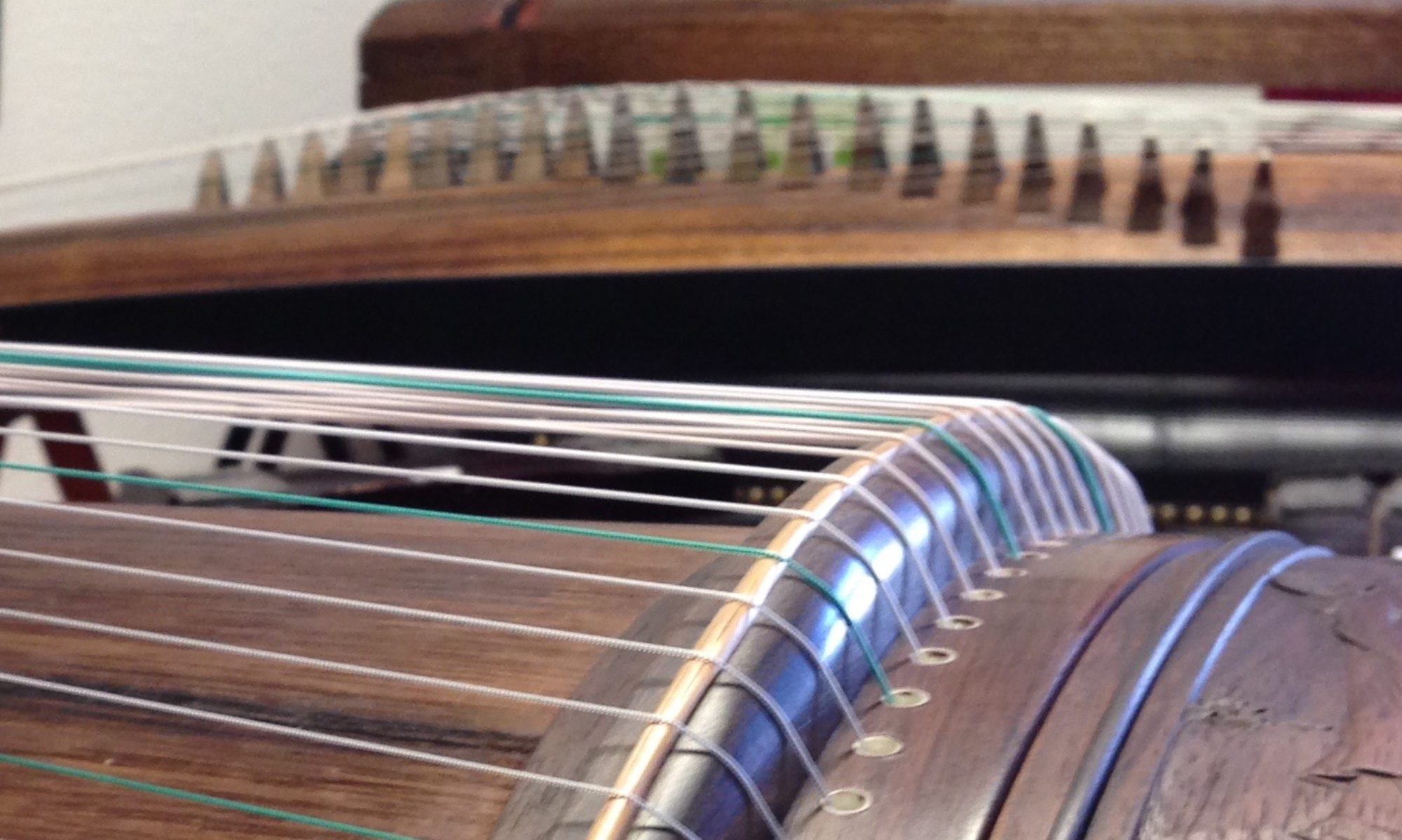The Guzheng is a 21 -stringed traditional Chinese musical instrument that belongs to the asian long zither family. It is a plucked-string instrument with a vast history dating back over 2,500 years. The Guzheng features a rectangular-shaped soundbox with strings stretched over movable bridges. Here are its main parts:

- Head- Contains a compartment where the tuning pegs are housed. This area is typically decorated with various materials that add to the esthetics of the instrument.
- Tail- This is the portion is the furthest away from the performer and is the main focal point for decorative elements, which typically match the decor of the head. This is also where the strings come through the bottom of the body across the guzheng and into the tuning pegs.
- Soundbox:
 The body of the Guzheng is usually made of wood, in general paulownia wood is used. The soundbox amplifies the vibrations of the strings, producing sound.
The body of the Guzheng is usually made of wood, in general paulownia wood is used. The soundbox amplifies the vibrations of the strings, producing sound. - Bridges: The Guzheng typically has movable bridges made of wood or other materials. These bridges support the strings and help to determine the pitch of each note. By adjusting the position of the bridges, the player can fine tune the instrument
- Yue Mountain and S bridge: These are the starting and ending points for the strings. The Yue Mountain is the right long bridge. The S bridge is sometimes in an ‘S’ shape (hence the name) this bridge can also be straight instead of ‘S’ curved in certain models.
- Strings: The Guzheng generally has 21 strings, although modern versions may have more. The strings are made of steel inside a nylon wrapping. Each string is attached to a tuning peg at one end and passes over the bridges to the other end of the instrument.
- Tuning Pegs:
 The tuning pegs are located at one end of the Guzheng typically inside a little box at the head and are used to adjust the tension of the strings, thereby controlling the pitch of each note. Check out our Blog post on tuning the Guzheng if you are new to it####<—-Link to that page
The tuning pegs are located at one end of the Guzheng typically inside a little box at the head and are used to adjust the tension of the strings, thereby controlling the pitch of each note. Check out our Blog post on tuning the Guzheng if you are new to it####<—-Link to that page - Resonating Chamber: Inside the soundbox, there may be a resonating chamber that helps to amplify and project the sound produced by the vibrating strings.
- Decorative Elements: Many Guzhengs are works of art adorned with Intricate designs-
 Carvings
Carvings Paintings
Paintings and many more varieties on the head and tail and sometimes on the bridges as well. These decorative elements can vary widely. Indeed they often reflect the cultural and artistic traditions of the region where the instrument was made.
and many more varieties on the head and tail and sometimes on the bridges as well. These decorative elements can vary widely. Indeed they often reflect the cultural and artistic traditions of the region where the instrument was made.
Excerpt from Bei Bei’s Guzheng Tutorial –

